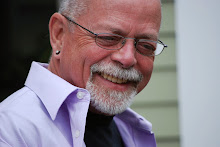Monday, June 27, 2011
'We were outgunned.'
On Saturday and Sunday morning, the images of the celebrating crowds in front of the Stonewall Inn reminded many of us of the images of the very angry crowds in front of the same inn, almost exactly 42 years earlier. Then, there were no professional photographers, and the black and white images were grainy and out of focus, and nobody was posing for the photographer. The commentaries on Friday night’s vote pointed out that, at last, we have come from the Stonewall Riots to Gay Marriage, from the initial eruption of gay liberation to the final fulfillment of gay liberation. This linkage invites a comparison and emphasizes that the first was violent, and the second was a legislative act. I saw in some places (but can’t find them now) pictures of the Stonewall Riots, side by side with pictures of the celebrations on Friday night on the same block of Christopher Street. How far we’ve come, it was easy to think, from anger to celebration!
And yet, look at how the Times describes the series of actions that took place to bring about victory. In “Behind N.Y. Gay Marriage, an Unlikely Mix of Forces, by Michael Barbaro,” the reporter describes the changing dynamic, “where Wall Street donors and gay-rights advocates demonstrated more might and muscle than a Roman Catholic hierarchy” Later, Barbaro says, “it was clear the church had been outmaneuvered by the highly organized same-sex marriage coalition, with its sprawling field team and, especially, its Wall Street donors.” The emphasis in these paragraphs is on the use of force, use with a military tinge. “‘In many ways,’ acknowledged Dennis Poust, of the New York State Catholic Conference, ‘we were outgunned.’” Instead of a discussion of moral issues or even of legal issues, the “road to gay marriage” is being presented in terms of physical struggle, and the Governor, the Wall Street donors, and the gay-rights advocates were stronger. and better at fighting that their opponents. Progress forward has a violent edge, and it is here that the Stonewall Riots and the “road to marriage in New York” belong in the same sentence.
It is hugely satisfying to me that our side proved stronger and better fighters than the Republicans and the Roman Catholic Church. That’s just so goddamn satisfying. One of the lessons of the Riots was that the days of our being weak were now over, and from now on we were going to be the fiercest son-of-a-bitch to walk down Christopher Street. And sometimes we are. And when that happens, I thank my good luck that I live in these times when gay people are fierce as well as free.
